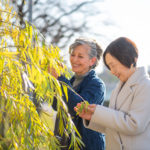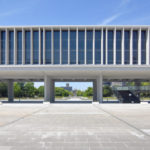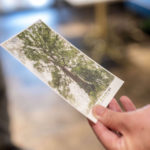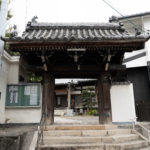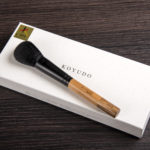Think about peace from atomic bombed buildings and trees(kamiyacho-hondori area)
Even before the bombing, Kamiyacho and Hondori areas were prospering as they still are today. It was a lively town with many people coming and going with shops, commercial facilities and banks.

(Collection of Hiroshima Municipal Archives)
Camphor trees: in Shirakami-sha Shrine
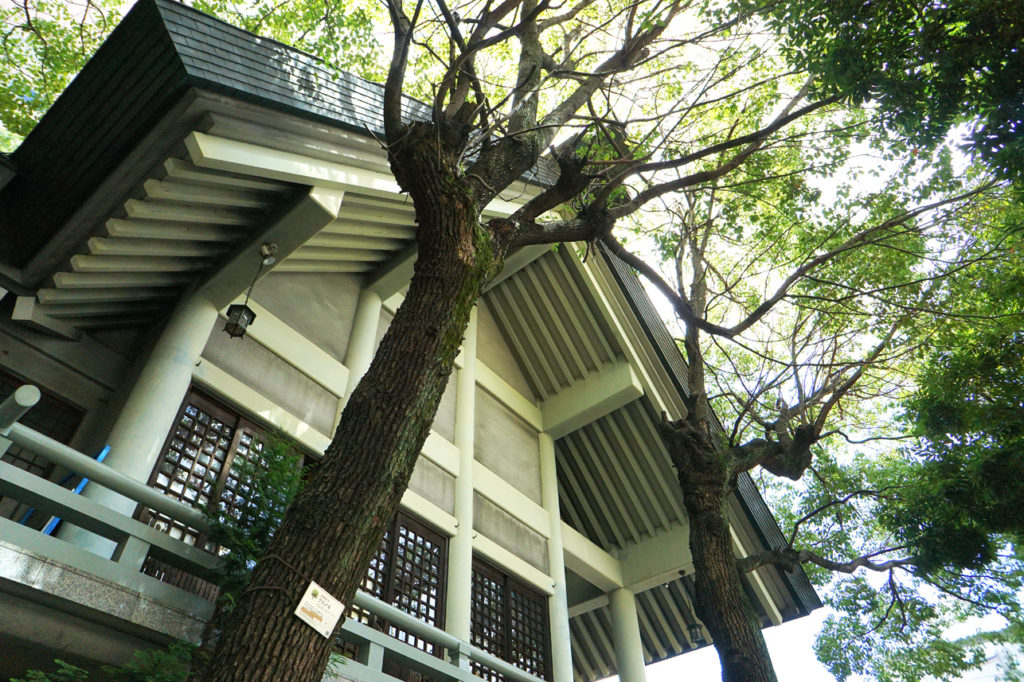
Though the atomic bomb destroyed the upper part of the tree, shoots sprouted from the root and grew. The gigantic stones under the shrine building and the guardian dog statues with their noses chipped were also left.
Address: 7-24 Nakamachi, Naka ward, Hiroshima city (Shirakami-sha Shrine)
Former Hiroshima Branch of the Bank of Japan (Hiroshima Branch of the Bank of Japan)

(Photo by KAWAMOTO Toshio, courtesy of KAWAMOTO Yoshio)

Though the third floor burned down the Hiroshima branch of the Bank of Japan, built in 1936, the first and second floors were not destroyed and this solid building did not collapse.
The building was for the Bank of Japan, but it provided space for city banks in the devastated city. The inside of the building was partitioned and a counter was set up for each bank, and business resumed on August 8, only two days after the atomic bombing. The building is currently designated as an Important Tangible Cultural Property by Hiroshima City. It is used as a place to present artistic and cultural activities. Also, on the first basement floor, there is an exhibition room that introduces the history of modern Hiroshima and foreign immigrants.
Address: 5-21 Fukuromachi, Naka ward, Hiroshima city
Phone: +81-(0)82-504-2500 (Hiroshima City Cultural Promotion Division)
Opening hours: 10:00-17:00 *Opening hours may be extended due to events.
Admission: Free
Closed: December 29 to January 3
<<Exhibition room on the first basement floor>>
Opening hours: 10:30-16:30
Closed: Mondays (If national holiday; the following weekday will be closed)
Fukuro-machi Elementary School Peace Museum (Fukuromachi Kokumin School)

(Photo by the US Strategic Bombing Research Team, collection of US National Archives,courtesy of Hiroshima Peace Memorial Museum)
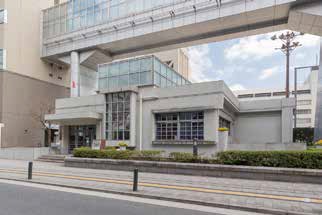
It was a modern, reinforced concrete school built in 1937, with one basement floor and three floors above ground, equipped with flushable toilets and dust chutes. However, it was destroyed by the atomic bombing, leaving only its outline. The burned-out school building was used as an evacuation center and first-aid station. People would come here to inquire about the safety of the children, staff and community members. Nowadays, the Fukuromachi Elementary School Peace Museum has been established, and some part of the west school building is preserved. You can see a wall of the school building with messages asking for people’s safety.
Address: 6-36 Fukuromachi, Naka ward, Hiroshima city
Phone: +81-(0)82-541-5345
Opening hours: 9:00-17:00
Closed: December 28 to January 4
*If you are visiting in a group, please apply in advance.
Please download the tour request form via website below, fill in the necessary information, and apply by fax.
http://www.fukuromachi-e.edu.city.hiroshima.jp/shiryoukan-index.html (Fukuromachi Elementary School Peace Museum Website)
Hiroshima Andersen (Former Imperial Bank Hiroshima Branch)

(Photo by US Strategic Bombing Research, collection of US National Archives, courtesy of Hiroshima Peace Memorial Museum)
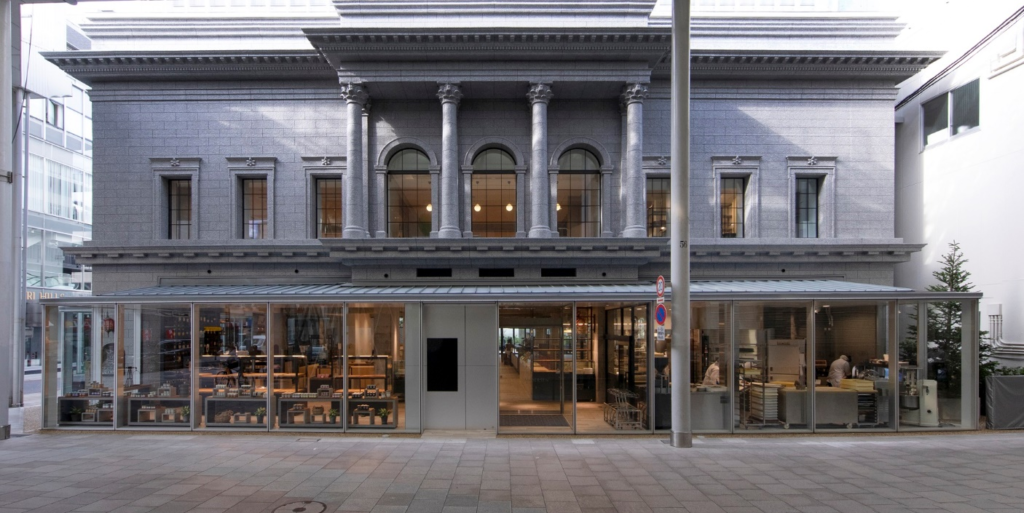
Hiroshima Andersen, opened on August 1, 2020
The building was built in 1925 as the Hiroshima branch of Mitsui Bank, and at the time of the atomic bombing it was the Hiroshima branch of the Imperial Bank due to a merger. The roof of the building was ripped off by the fierce blast and heat rays, and the western wall near the hypocenter collapsed and was hidden in flames. After the war, the building was restored and was used as a bakery, but due to the age of the building, it was decided to be rebuilt. The outer wall, which had been bombed, was partially preserved and the second floor followed the design of the old building. The shop opened again in August 2020.
Address: 7-1 Hondori, Naka ward, Hiroshima city
Phone: +81-(0)82-247-2403
Open: 10:00 -19:00
Closed: No regular schedule.
Fukuya Department Store
.jpg)
Fukuya Department (New building) in 1938

Fukuya department in 1945, one month after the atomic bombing.
(Photo by HAYASHI Kazuma, courtesy of Hiroshima Peace Memorial Museum)

The department store was built in 1938 and was a modern building with a steel-reinforced concrete structure, two basement floors and eight floors above ground. Also equipped with air conditioning and heating systems, which was still rare at the time. It was called the “Chalk Hall of Fame” and became a place of admiration for many people. The interior of the building was completely destroyed by the intense blast and heat of the atomic bomb. The building’s framework and outer walls remained, and it was used as a temporary evacuation hospital. It has been repeatedly remodeled and is still used as a department store. The bombed and burned tiles of the exterior walls are now on display on the first floor.
Address: 6-26 Ebisucho, Naka ward, Hiroshima city
Shukkeien Garden (Ginkgo,Muku Tree, Japanese black pine)

(Collection of Hiroshima Municipal Archives)

Ginkgo

Muku Tree

Japanese black pine
The Japanese garden that has been around since the Edo period(1603-1868). Ginkgo trees, Muku trees, and Japanese black pine trees have been registered as “Hibaku(a-bombed) Trees,” as they were severely damaged by the blast and heat rays from the atomic bomb. In particular, the trunk of a Ginkgo tree over 200 years old tilts toward the hypocenter, and keloid scars still remain on the trunk.
Address: 2-1 Kaminobori-cho, Naka ward, Hiroshima city (Shukkeien Garden)
Phone: +81-(0)82-221-3620
Opening hours: 9:00-18:00 (April-September), 9:00-17:00 (October to March). Admission is until 30 minutes before closing.
Admission: 260 yen for adults, 150 yen for high school and university students, 100 yen for elementary and junior high school students.
Closed: December 29 to 31
Route Map
Think about peace from atomic bombed buildings and trees
(The area of the Peace Memorial Park)
Reference books for this article

‘Hiroshima “silent witness”: A-Bombed Buildings and Trees Guidebook’
Hiroshima City (Published 2019)
Price: 1000 yen
Introducing Peace Study Projects
Cooperation with local companies to convey the importance of life through hibaku-jumoku, trees that survived the atomic bombing
JMS Co., Ltd. supports the Green Greetings Project. The objective of the project is to protect trees that survived the atomic bombing in Hiroshima, to pass them down to generations to come to disseminate information about the existence of these trees.
Cooperation with local companies to convey the importance of life through hibaku-jumoku, trees that survived the atomic bombing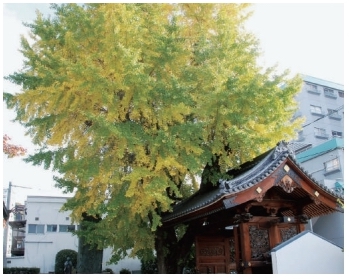
Peace Tourism (Hiroshima City)
This is for those who are interested in peace-related facilities in Hiroshima City. The appearances of the facilities before the dropping of the atomic bomb and some stories about the recovery from the ashes of the war are introduced.
Exploring “A Longing for Peace”
Tags associated with this article



